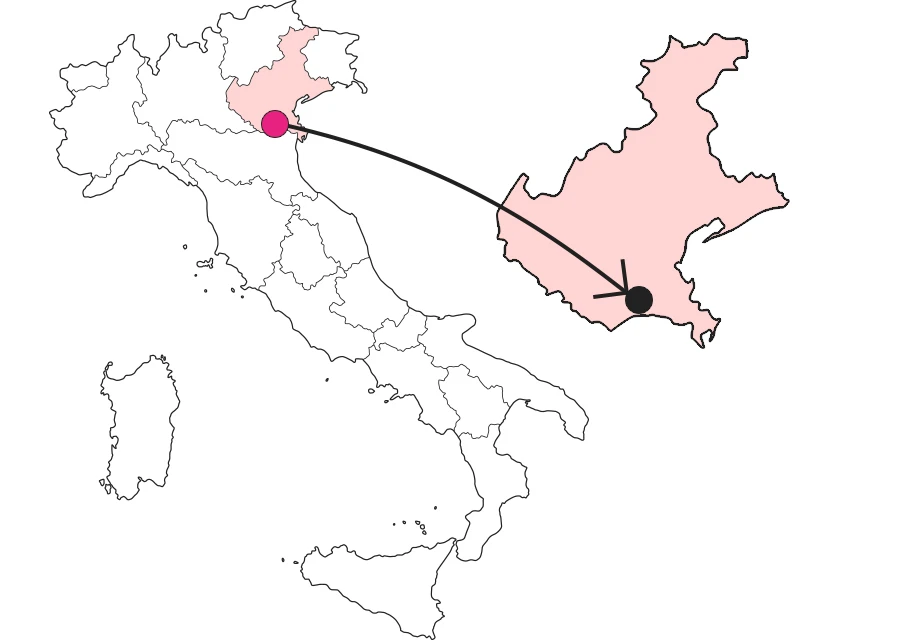SHARRYLAND


The fossil dunes of St. Aryan
Not the usual isolated hills-what a story they hide!



Where is

What it is and where it is
They are not conspicuous, but in the absolutely flat horizon of the Po Delta they stand out like little islands in the expanse of iridescent wheat fields under the sea breeze. They are the fossil dunes of Sant'Ariano in Polesine, stretched between San Basilio and Grillara: 'dunes' because they are formations of a sandy nature; 'fossils' because they are the witnesses of an ancient coastline. It is well known that the river creeps further and further into the Adriatic, widening into a fan shape. These new lands are the result of the deposition of materials carried by the current and here if has tangible proof. From the time of the Etruscans to the present day, in fact, seven coastlines have been identified, each with a cordon of those sand dunes that are the earliest endowment of the Adriatic coastline. Of course, over the centuries almost all of these formations have been dismantled somewhat by natural erosion, but mostly to make room for agriculture and at the same time supply construction with a necessary raw material. Those few fortunately spared, therefore, should be considered valuable witnesses to the past and as such are protected today.
Why it is special
The fossil dunes of St. Aryan tell a story that goes well beyond their naturalistic value. At its southern end, in fact, is the small medieval church of San Basilio, dating back to the 9th-10th centuries to be exact, that is, to the time when the only way of communication in the vague lands of the Po Delta was the via Popilia, a coastal road traced by the Romans between Adria and Ravenna and at that time frequented by pilgrims descending to Rome. The small church, erected by the Benedictines of the nearby Pomposa Abbey, stands on the site of an early Christian place of worship dating back to the fourth century AD. It thus comes to light that at that time San Basilio was an important trading station to which a large tract of territory referred: goods arriving from the Mediterranean basin and from here going up to the continent, and vice versa. Archaeologists have had their work cut out for them.
Not to be missed
A brick building with essential forms, harmonizing well with the ancient little church of St. Basil. This is what the St. Basil's Cultural Center looks like, which inside includes the St. Basil's Archaeological Museum. The oldest exhibits are locally produced ceramics found in a 6th-5th century B.C. settlement that hark back to the time when the Paleovenetian civilization came into contact with the Greeks and Etruscans. The centerpiece of the collection, however, is the materials from the excavation of a Roman villa, erected at the time of the first Via Popilia a few hundred meters from San Basilio and documented until the 5th century AD: in addition to architectural parts, oil lamps of various shapes, fine tableware ceramics, blown glass bottles and cups, bone or horn needles and pins... to close with a numismatic section, dedicated a 'little treasure' of coins unearthed after two millennia during excavation.
A bit of history
The concept of an island applies perfectly to the fossil dunes of the Po Delta, and the naturalist explains why. A coastal dune, in fact, experiences a first phase in which it is 'white,' that is, made up of only sand and for this reason mobile, albeit almost imperceptibly, under the push of the wind. Then the dunes become 'gray' in the sense that certain pioneer plants take root beginning a work of stabilization that in the long run sees shrubs such as juniper take over and finally trees such as the holm oak, an evergreen Mediterranean oak, or such as maritime pines, the latter, however, by human hand. And with the vegetation, an increasingly complex fauna, from insects to higher animals, settled in hand in hand. Here then, at the end of a process that takes millennia, are the 'fossil' dunes transformed into an island of biodiversity in the monotonous sea of the Polesine countryside.
Curiosity
It takes some eyeballing, but perseverance may be rewarded by a couple of memorable sightings. The first and most likely involves the bee-eater (Merops apiaster), a small bird with multicolored plumage that has the characteristic of hunting insects in flight,-bees and wasps mostly, as its scientific name suggests, but also dragonflies and butterflies,-which it holds in its beak when it then alights on bare branches or light wires. The second possible sighting, even more exciting, might be with the sea jay (Coracias garrulus), similar to a crow but with plumage in which a jaw-dropping turquoise prevails. Both are long-distance migrants: from the Po Delta, where they nest, with a specific preference for the fossil dunes of Aryan, to Equatorial Africa, where they winter, and this is enough to consider them illustrious guests.
Enter the Map of Italy's Undiscovered Wonders and find treasures where you least expect it... Inspire, Recommend, Share...
Collections
The Map thanks:
Enter the Map of Italy's Undiscovered Wonders and find treasures where you least expect it... Inspire, Recommend, Share...
Where is

Collections

